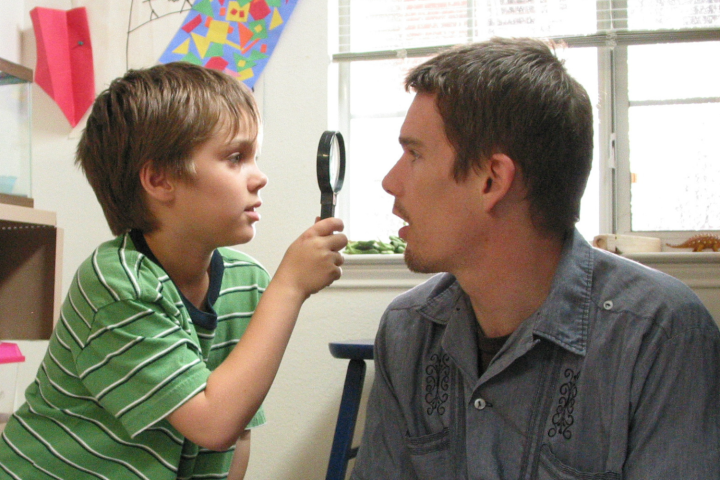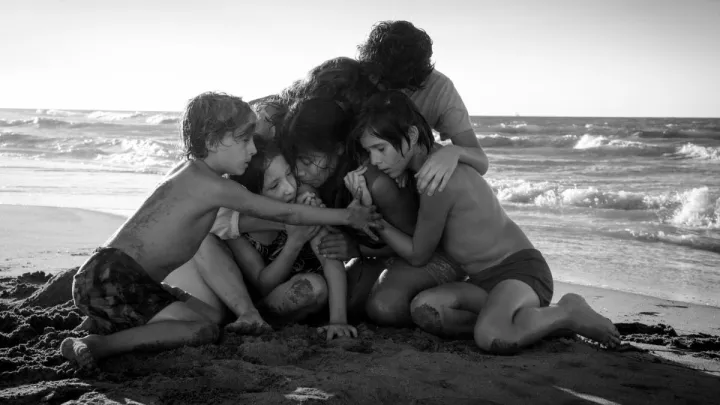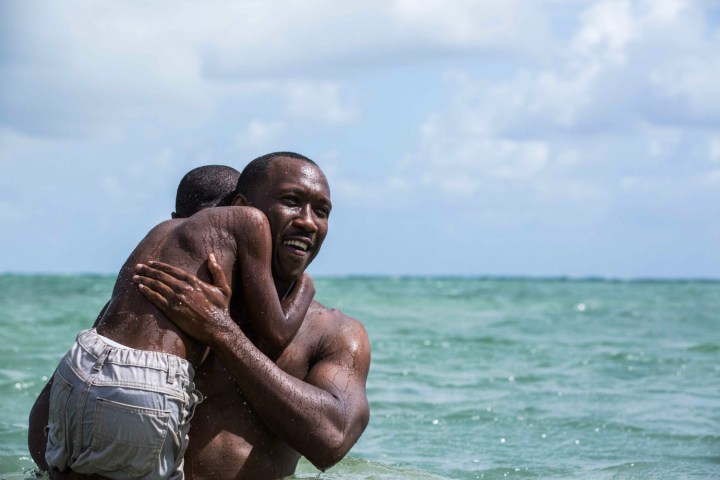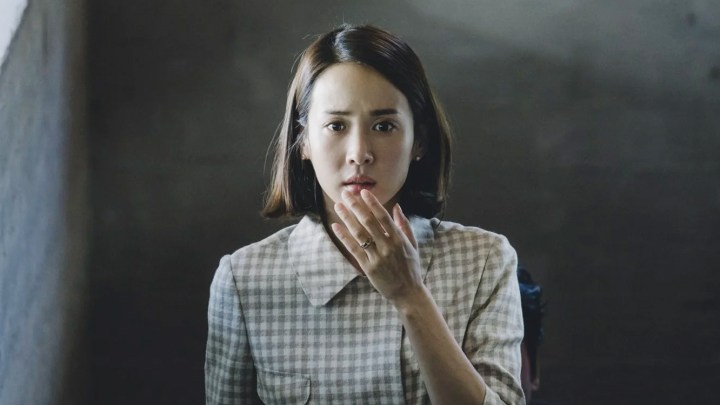The 2010s were a treasure trove for groundbreaking films that transformed into modern classics. These innovative movies pushed boundaries and redefined genres, permanently changing filmmaking and pop culture in the process. Whether it’s intense dramas or stunning animations, the 2010s had something for every type of cinephile.
From the legendary Parasite to the poignant Moonlight, the 2010s were full of genre-defining masterpieces that continue to influence and inspire. It showcased talents from all over the world and had fans flocking to cinemas year after year. With the 2020s now well underway, it’s possible to look back at some of the greatest cinematic gems from the decade that delivered some of the most unforgettable stories ever told.
10. The Social Network (2010)

The Social Network chronicles the creation of one of the most important innovations of the 2000s – Facebook. Directed by David Fincher, the biographical drama primarily focuses on Mark Zuckerberg (Jesse Eisenberg), a Harvard student who partners with his friend Eduardo Saverin (Andrew Garfield) to develop “The Facebook.” The site’s growth eventually attracts the interest of Napster co-founder Sean Parker (Justin Timberlake) but also starts to cause drama between Mark and Eduardo, whose once close bond dissolves into a lengthy legal battle.
The 2010 film benefits from a sharp screenplay by Aaron Sorkin, which is perfectly executed under Fincher’s masterful direction. The tech startup world is depicted with increasing intensity in The Social Network, especially as Mark’s complex character inevitably makes questionable decisions to maintain control over the company. While its historical accuracy is dubious, it’s undoubtedly a captivating watch, if only to see the heartbreaking betrayal that destroys Mark and Eduardo’s friendship.
9. Boyhood (2014)

Often cited alongside the best coming-of-age movies of all time, Boyhood is a unique movie in that it follows the same cast over a period of twelve years. Directed by Richard Linklater, it primarily revolves around the life of Mason Evans Jr. (Ellar Coltrane), who grows up in Texas with his single mother, Olivia (Patricia Arquette), and older sister, Samantha (Lorelei Linklater). It then depicts the milestones of Mason’s childhood to young adulthood, including his complicated relationship with his father, Mason Sr. (Ethan Hawke), awkward school dances, budding romances, and more.
Boyhood doesn’t feature a traditional plot structure, opting for a series of vignettes featuring Mason’s character, friends, and family. It also incorporates the changes in actors’ real lives and personalities into the constantly evolving script every year. This atypical approach stays true to the 2014 film’s commitment to authenticity, which results in a work of art that realistically captures the bittersweet experience of growing up.
8. La La Land (2016)

The modern musical romance that had viewers sobbing as they left theaters, La La Land is a massively successful work by director Damien Chazelle. Set in Los Angeles, it’s centered on the whirlwind romance between Mia (Emma Stone), an aspiring actress, and Sebastian (Ryan Gosling), a dedicated jazz musician. Over time, Mia and Seb begin to realize that they need to pursue different paths and choose between embracing their ambitions or saving their relationship.
La La Land received universal acclaim for Chazelle’s sharp direction, the cast’s impeccable performances, and its dazzling musical score. It paid homage to classic Hollywood musicals without losing its contemporary flair, with the song and dance portrayal of Mia and Seb’s love story being technically impressive and incredibly entertaining to watch all the way to its tear-jerking ending. The 2016 movie would receive a record-tying fourteen Oscar nominations, winning six, including Best Director for Chazelle.
7. Call Me by Your Name (2017)

Call Me by Your Name is a moving coming-of-age romance directed by Luca Guadagnino based on André Aciman’s eponymous 2007 novel. Set in the summer of 1983 in Northern Italy, the film follows the connection that forms between 17-year-old Elio Perlman (Timothée Chalamet) and Oliver (Armie Hammer), a 24-year-old graduate student working as an intern for Elio’s father (Michael Stuhlbarg). While initially hesitant, the inexperienced Elio soon falls hard for the confident Oliver, with their tender affair being the highlight of the summer.
With its lush setting, mesmerizing performances, and heartbreaking depiction of first love, the 2017 film was immediately lauded as one of the best contemporary romance movies. There’s a slow build-up that maximizes the romantic backdrop, with the entire film taking viewers on a journey of new love and sudden heartbreak. Call Me by Your Name also features rich dialogue to reflect its characters’ growing desires and evolving emotions, with the movie notably taking home the Oscar for Best Adapted Screenplay at the 90th Academy Awards.
6. Spider-Man: Into the Spider-Verse (2018)

It wouldn’t be an overstatement to say that Spider-Man: Into the Spider-Verse reinvigorated the saturated superhero genre, with the cutting-edge animated movie bursting onto the scene with its distinct visual style and exciting story. The film follows Miles Morales (Shameik Moore), a Brooklyn teenager who struggles to live up to his father’s expectations while embracing his role as the new Spider-Man. When Kingpin (Liev Schreiber) activates a particle accelerator, it opens a portal to multiple dimensions, bringing together different versions of Spider-Man from various universes. They soon have to work together to stop the villain from destroying reality as they know it.
Into the Spider-Verse is easily one of the greatest superhero movies from the last decade, with the film being a clear love letter to both its medium and the comics. The 2018 movie is chock full of color and energy, showcasing spectacular aesthetics and animation styles that would push boundaries and set high standards for future films. Its sequel, Across the Spider-Verse, was similarly successful, with countless fans eagerly waiting for the third movie, Beyond the Spider-Verse.
5. Portrait of a Lady on Fire (2019)

In the late 18th century, on a remote island in Brittany, the young painter Marianne (Noémie Merlant) is commissioned to create a wedding portrait of the reluctant bride-to-be Héloïse (Adèle Haenel). Having just left a convent and unwilling to marry a man she has never met, Héloïse refuses to sit for portraits, so Marianne must observe her in secret and paint her likeness without her knowledge. As Marianne spends more time with Héloïse, they unexpectedly fall in love despite their impossible circumstances.
Portrait of a Lady on Fire is a stunning work by director Céline Sciamma, who would make history by becoming the first female filmmaker to win the Queer Palm at the 2019 Cannes Film Festival. A triumph of diverse romances on the big screen, the 2019 film beautifully captures a fleeting affair by portraying burning desires with a balance of clever subtlety and intense passion. The resulting relationship is both uniquely intimate and tragically doomed, with Marianne and Héloïse’s arcs being among the most powerful stories of the 2010s.
4. Mad Max: Fury Road (2015)

Mad Max: Fury Road would serve as the fourth installment in the Mad Max franchise, reinvigorating the post-apocalyptic series that began in 1979. Set in a desolate desert wasteland where water and gasoline are scarce commodities, the 2014 film follows the troubled loner Max Rockatansky (Tom Hardy) as he teams up with the warrior Furiosa (Charlize Theron). The duo plots their escape alongside the tyrannical warlord Immortan Joe’s (Hugh Keays-Byrne) five wives, as they are relentlessly pursued by Joe and his War Boys.
Directed by George Miller, Fury Road dazzled with its non-stop action, particularly the extended chase scenes featuring massive war rigs and spectacular explosions in the desert. With a story that unfolds at breakneck speed to go with its stunning visual and practical effects, it’s not surprising that the heart-pounding movie has aged incredibly well. It has even spawned a prequel film, Furiosa: A Mad Max Saga, which premiered to smaller critical and commercial acclaim.
3. Roma (2018)

Director Alfonso Cuarón’s Roma is one of the best Netflix original movies ever made, with the renowned drama revolving around Cleo (Yalitza Aparicio), a young indigenous maid working for a middle-class family. Set during the early 1970s in Mexico City, it shows Cleo’s perspective as she goes through her daily tasks for the family she serves, with her connection with the matriarch Sofia (Marina de Tavira) particularly highlighted. Deeper struggles within Cleo’s life and routine are soon revealed and juxtaposed with Sofia’s own problems.
Cuarón’s personal connection to the story shines through the film, with the gorgeous black-and-white work being inspired by his own upbringing and the women who shaped his life. Roma has been praised for its depiction of the often-overlooked lives of domestic workers and the way its actors, specifically Aparicio, have a dignified and humanizing approach to their roles. The 2018 film would become the first-ever Mexican entry to win Best Foreign Language Film at the 91st Academy Awards. Roma also took home the Oscar for Best Cinematography and Best Director.
2. Moonlight (2016)

An instant classic directed by Barry Jenkins, Moonlight is a profound coming-of-age drama that chronicles the life of its protagonist, Chiron. The film is divided into three chapters, each depicting a pivotal stage in Chiron’s life: childhood, adolescence, and adulthood. The first chapter, “Little,” introduces Chiron (Alex Hibbert) as a young boy growing up in a rough Miami neighborhood who finds solace in a local drug dealer, Juan (Mahershala Ali). In the second chapter, “Chiron,” the story shifts to Chiron’s teenage years (Ashton Sanders), where he grapples with his sexual identity. The final chapter, “Black,” depicts an adult Chiron (Trevante Rhodes), who has transformed into a hardened figure, mirroring Juan.
Moonlight is unflinching in its portrayal of Chiron’s hardships, including his mother’s struggle with drug addiction and his own experiences with bullying and fights. The 2016 film is a bold exploration of Black masculinity and queer identity, an intersection so rarely seen in mainstream movies. Now considered among the best movies of this century, it would win three Oscars, including Best Picture, cementing its place in cinematic history.
1. Parasite (2019)

Parasite is a film that needs no introduction. Director Bong Joon-ho would shock the world with a genre-bending masterpiece that would quickly turn him into a household name. It has a deceptively simple premise, with the film following the impoverished Kim family, who scheme their way into the lives of the wealthy Park family by posing as skilled workers. The Kims enjoy their new positions for a while, only for a dark secret to emerge that could jeopardize their carefully constructed ruse.
Bong Joon-ho’s brilliant satire would have a historic triumph at the 92nd Academy Awards, where it became the first non-English language film to win Best Picture alongside an additional three Oscars. The eat-the-rich movie greatly benefits from the South Korean filmmaker’s trademarks, which include cleverly using meticulously crafted settings and composition to convey socio-economic commentary. Paired with a flawless screenplay that hides a truly jaw-dropping twist, Parasite delivers a thrilling viewing experience and a biting critique of capitalism and class division.




